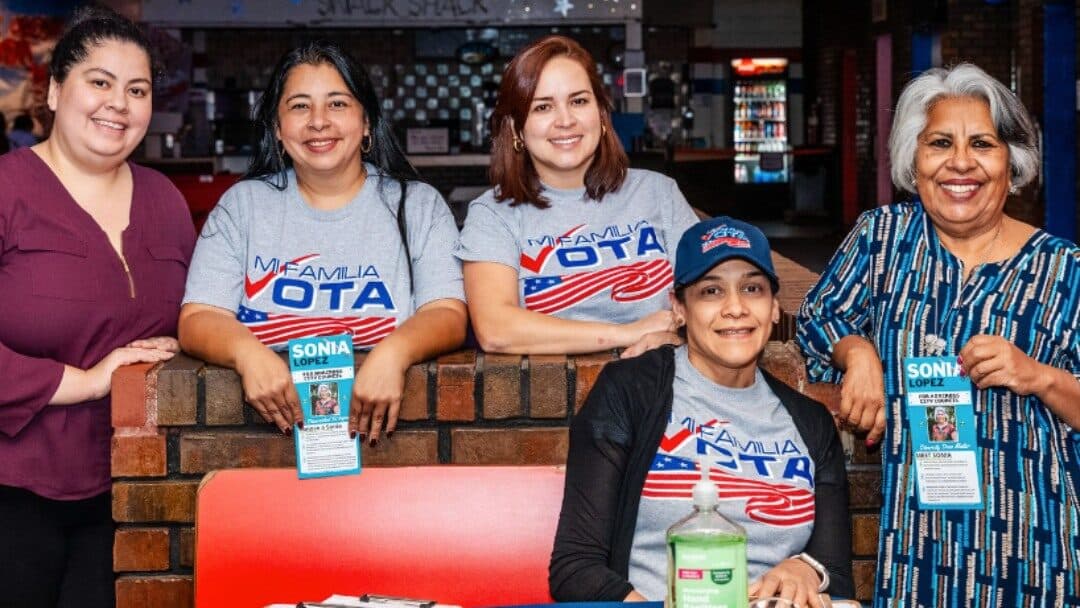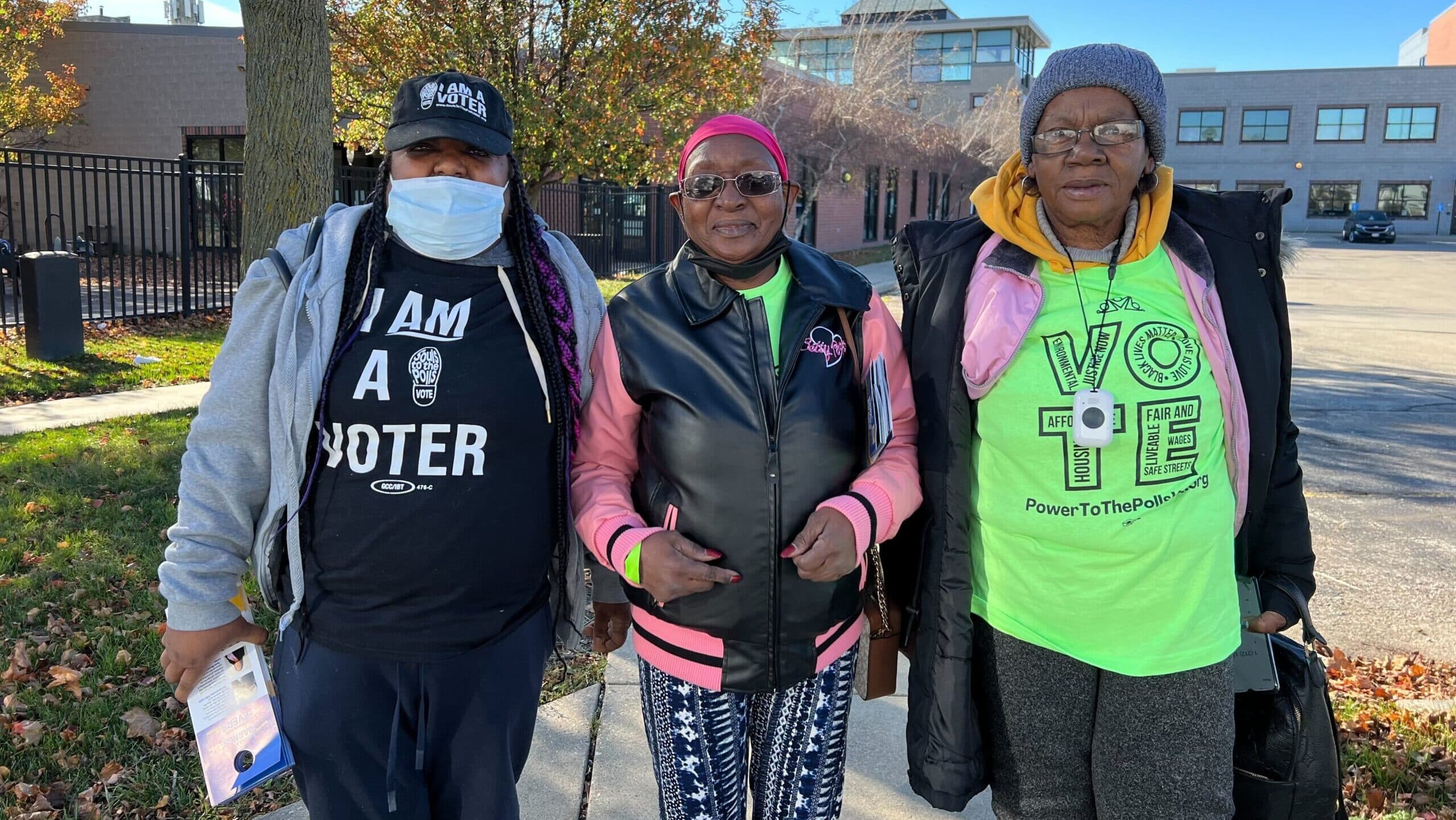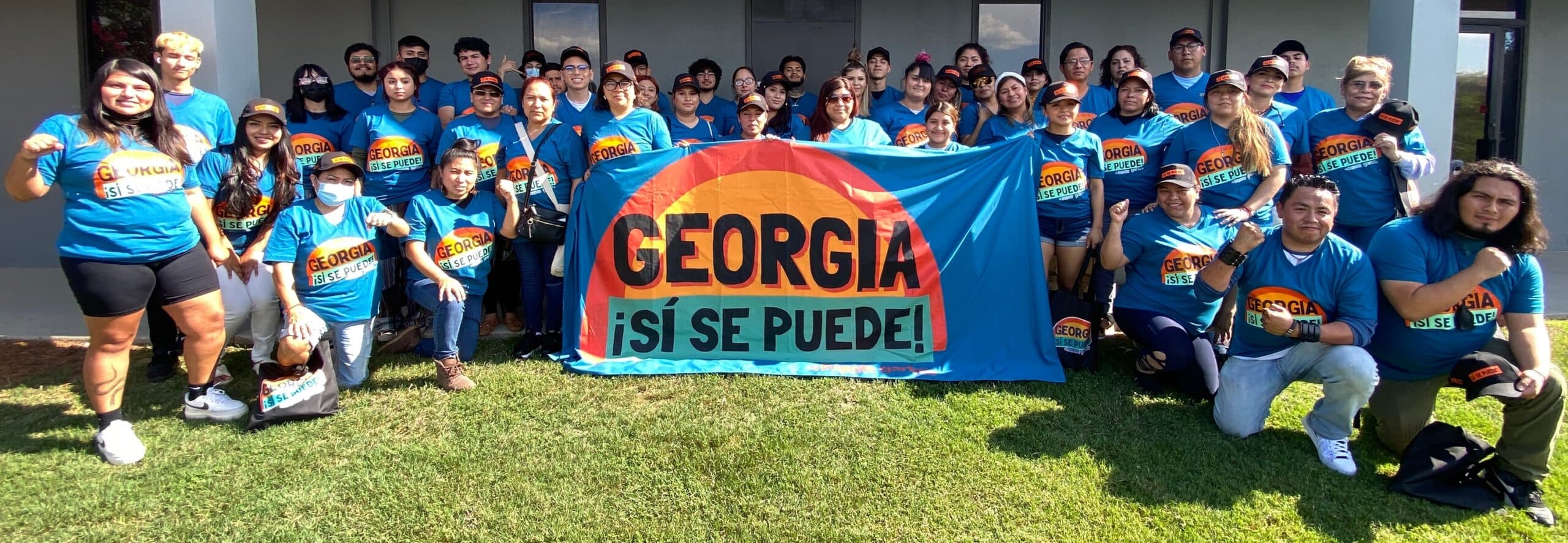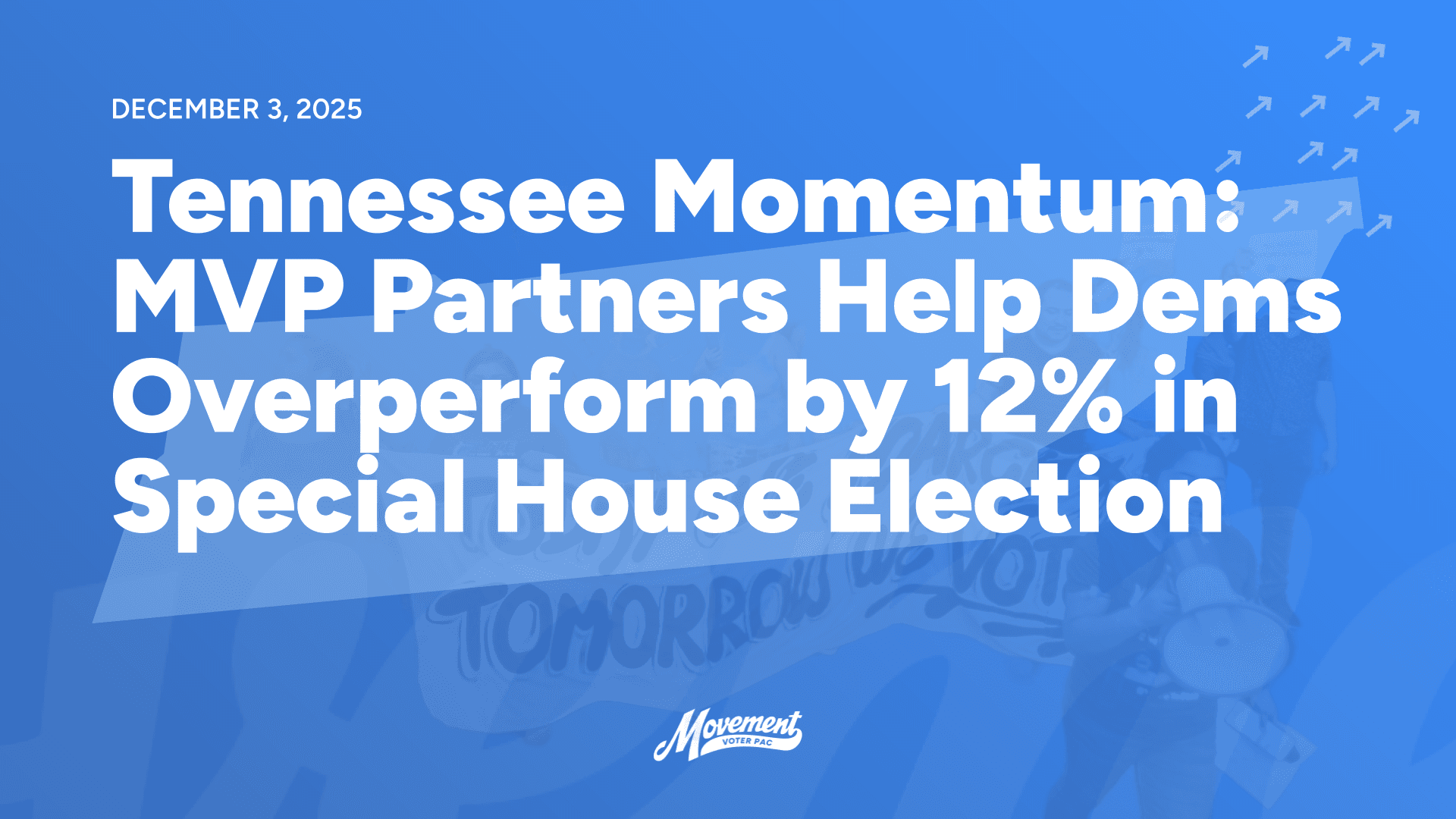Excerpted from Bat Signal 2: The Biggest Investment Ever
###
The One Thing in Our Control
There is a lot about the national political environment that is largely outside of our control. The economy and how it is perceived. Third-party candidates. The trajectory of devastation in Gaza and the politics of the U.S. role in Israel and Palestine. And other unforeseen domestic and world events. We could easily have more wars, climate disasters, economic shocks, scandals, candidate plot twists, and God-knows-what-else between now and next November.
Even with all of these factors, known and unknown, the most likely scenario in November is that a few thousand votes in a handful of states will tip the Electoral College and control of Congress, and with them, the future of the country.
Which means that there is one major factor that is very much within our control: The level at which we choose to resource the local voter mobilization groups who are best positioned to get voters into the polling booth – or sending in their mail-in ballots – and getting us the heck out of this mess.
Trump is not inevitable. He is a walking dumpster fire. As a candidate, he has strengths and weaknesses. Biden is not inevitable either. He has strengths and weaknesses. At the end of the day, the election is in our hands. We just have to actually put in the work to close the deal.
Sometimes, it feels like we have been gawking at the 2024 election like it’s a car crash on the other side of a six-lane highway. We haven’t quite processed that the car crash is happening just ahead of us on our side of the highway. We need to swerve off the highway to avoid crashing. When you are facing an unprecedented life-or-death situation, it is time to do unprecedented things. We have to act quickly. We have to climb into the driver’s seat, grab the steering wheel, make the biggest investment we have ever made, and change direction to save ourselves and our precious cargo.

Credit: Asian Americans Advancing Justice in Atlanta (Georgia)
The Gap Is the Ground Game.
For an election in which turnout will be the most important factor, the Biden campaign is operating in a curiously low-key fashion.
For comparison, in the fall of 2011, the Obama re-election campaign had more than 300 staff already hired going into 2012. Eventually they had 800 local campaign offices. Guess how many staff the Biden campaign has so far? According to their October 2023 filings: 38. It looks like ads and public appearances are their primary strategy, with a side order of digital micro-influencers. These are all necessary strategies but far from sufficient.
The idea that they will even attempt to run a robust ground game is seeming more and more remote. Essentially, by default, they are depending on the kinds of local grassroots organizations that MVP and our allies support, to run most of the ground game for them. But they’re not saying that explicitly. They’re not saying: “Hey donors! We’re not running a major ground game this time. Please make sure you fund the outside groups to do it for us.”
Given campaign finance laws, it probably isn’t even legal for them to say that. But it’s important that somebody does.
Here Is The Plan.
Given the Biden campaign’s lack of robust field operations, MVP is taking our work of funding locally-based organizing all the more seriously. Our team of regional and state strategists and advisors have been putting together plans to supercharge voter organizing in all the key states — now all that’s needed are the resources to fund it adequately.

MVP’s 2024 state targeting
The Battlegrounds: Where We Need to Win
Where: We need to focus most of our resources on the nine critical Presidential and Senate battlegrounds (AZ, NV, GA, NC, WI, MI, PA, OH, MT), and secondarily on the approximately forty most competitive House districts. The more funds we can mobilize, the more money we can also move to secondary battlegrounds with key down-ballot and long-term contests (especially control of state legislatures) that would be unwise to completely forget about. More on targeting here.

Who and how we target voters: No surprise: we need to focus on young voters, voters of color, women, and other often-marginalized communities such as immigrant and LGBTQ voters.

Source: catalist.us/wh-national
We also need to reach out to cross-pressured white voters, male voters, union households, rural voters, working-class voters, and persuadable independents of all races. We can’t afford to take any community of voters for granted in 2024.

Clockwise from top left: Advance Carolina (NC); Detroit Action (MI); Georgia Alliance (GA); LUCHA (AZ); Leaders Igniting Transformation (WI); 1Hood Power (PA)
Frontline Organizers: Our Best Hope
Especially because enthusiasm, trust, and awareness of Biden’s accomplishments is low, our best bet is to fully fund the maximum plans of the hundreds of local and multi-state organizations that have track records of registering, educating, galvanizing, and turning out these voters.
These organizations fall into roughly five categories in terms of scope and scale:
- Major multi-state anchor organizations (there are approximately 100 of these), like People’s Action and the Alliance for Youth Action.
- Small-to-midsize national players (approx. 200), like UnPac and Be a Hero.
- Major state-level groups (approximately 100 in the battleground states), such as Living United for Change in Arizona (LUCHA) and New Georgia Project Action Fund.
- Mid-sized local groups (approx. 100), such as Durham for All (in North Carolina) and 1Hood Power (in Pennsylvania).
- Micro-local groups (approx. 1,000) such as the many small town organizations in Georgia’s rural Black Belt supported by Black Voters Matter Fund.

When we look at these numbers of groups, it does beg the question: Who has the time (and expertise) to analyze political trends, find the key races, research the best groups, and constantly recalibrate their funding for maximum political impact?
Almost nobody.
This is where MVP and our allied funding intermediaries play a critical role in dramatically streamlining the money-moving process.
Overall, MVP is probably the single largest “supply line” to most of the top 200 large and mid-sized local voter engagement groups in the top battleground states. We probably represent 10-20% of the overall funding for the progressive voter engagement field as a whole within the categories of groups we support.
We know these organizations are effective because they use proven voter contact methods, based on 25 years of research and hundreds of randomized control trial experiments. Collectively they have the experience, the relationships, and the scale to break through the white noise and actually move the dial. They are our best hope.
Trusted Messengers Do It Better.
Local frontline organizers are the trusted messengers who are going to do the actual work to listen and talk with tens of millions of voters; to register, educate, organize, protect, and persuade them; and to generate enthusiasm next fall.
We know these groups are effective because they use relational approaches to voter contact that have been empirically shown — and road-tested in recent election cycles — to produce a greater effect on turnout.
They have done it before. They can do it again. They just need adequate support to do their (increasingly challenging and dangerous) jobs.
Because of the unique dynamics of the 2024 race, targeting and persuasion are going to be a much bigger part of our local partners’ plans, even with young voters, Black voters, and other constituencies that Democrats typically engage around registration and get-out-the-vote.

Power to the Polls getting out the vote in Wisconsin, 2022
Our partners have to train their organizers with deep canvassing skills, empathetic listening, personal storytelling, and tested messaging to inoculate against and counteract the many divisive wedge issues that the other side is throwing at us.
From racial dog whistles to anti-trans, anti-immigrant, anti-Muslim, and anti-Jewish scapegoating, to economic misinformation and red-baiting, we have to prepare our canvassers to be ready for anything and everything in the right-wing kitchen sink of boogeymen (“George Soros and the tree-hugging socialists are bringing Black Muslim immigrants across the border to raise the price of gas and turn your child trans”).

Sources: Statista + Glassdoor
This is where it’s especially helpful to have on-the-ground organizers who aren’t just serving digital ads to voters using out-of-date, incomplete voter file data. Local organizers are trusted messengers who can have real in-depth conversations in a human-to-human way, which research has shown to be highly effective in shifting views on divisive topics.
In terms of micro-targeting within racial or geographic communities, local organizers tend to be more rooted in the more progressive parts of youth communities and communities of color – so there is some helpful self-selection in who they target within their communities. Local organizers have a deeply intimate and nuanced knowledge of which segments of youth and BIPOC populations to prioritize or deprioritize for persuasion vs. turnout that national campaigns and algorithms can simply never match.
This is one of the superpowers of local and relational organizing – the intimate specificity of the knowledge organizers have about their communities – down to the micro-micro level (e.g. “Jamie’s uncle is going to need some deep canvassing on trans issues,” or “Don’t GOTV that fraternity house but do GOTV that one.”).
And even if Democratic performance goes down some (e.g. if Black communities’ Democratic turnout goes from 92% to 85%), and even if our partners weren't engaging in targeting, persuasion, and operating with some built-in self-selection bias, it's still a huge net gain to double down on well-targeted investments in voter engagement. This is especially true in Black communities, whose turnout represented more than the margin of victory in each of the six closest states Biden won in 2020: Georgia, Arizona, Wisconsin, Pennsylvania, Michigan, and Nevada.

Georgia Latino Alliance for Human Rights (GLAHR) Action Network
That’s it. That’s the solution.
Target the battlegrounds. Fund the organizers. Do it now, not months from now. It’s not complicated.

The organizers are the frontlines. The donors are the supply lines. If we, as donors, follow through on doing our job — getting the funding to the frontlines as quickly as possible — so that organizers have the resources they need to do their jobs at the highest levels of scale and excellence.
Conversely: If our ground game is not extremely well-funded in the next few months, we will be going into the election with one hand tied behind our backs.
See the MVP plan here, and get in touch with us to invest big and early in 2024 like our democracy depends on it — because, for better or worse, it does.



